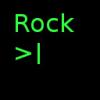I'm planning on making a 2d game and I want resolution scaling to look good. Such that if someone was using a 4k monitor the game would still look sharp. I don't just want to make the graphics output in those large formats. 4k images are large in size and not needed for people that have smaller desktops screens.
From the few tests I have done saving my a few different svg files as png files. Depending on the program and detail of the image the file size ranges from 1.5-2.0 times the file size for same image size.
Does it make sense to build a game that has SVG images and then allows the user to select a resolution then converts the images to the proper sizes for the resolution and saves them as png files. I'm thinking this could save a lot of HD/memory space on the lower end systems running my game.
I want animation in my game and SVG animations do vector calculations. I would think this would make the minimum hardware requirements higher for the game.
I just want to know if I'm understanding everything correctly.
Links:
(dis)advantage: http://www.gamedev.net/topic/557028-questions-concerning-vector-graphics/




